Dies ist eine alte Version des Dokuments!
Viola odorata L. - Violaceae - sweet violet, garden violet, English violet, Duftveilchen, März-Veilchen
Perennial herb, up to 10cm high; native to Eurasia, North Africa, cultivated as ornamental; leaves basal, petioled (up to 5cm), orbicular or reniform to broadly ovate-cordate, base deeply cordate, margin crenate; flowers fragrant, deep violet, seldom white or pink, stipules ovate, 3-4mm broad.
http://www.efloras.org/florataxon.aspx?flora_id=2&taxon_id=200014395
„The sweet scent of this flower has proved popular throughout the generations particularly in the late Victorian period, and has consequently been used in the production of many cosmetic fragrances and perfumes… There is some doubt as to whether the true extract of the violet flower is still commercially available at all. It certainly was in the early 20th Century, but by the time Steffen Arctander was writing in the late 1950s and early 1960s production had „almost disappeared“… The violet leaf absolute however remains widely used in modern perfumery.“
http://en.wikipedia.org/wiki/Viola_odorata
The odorants from vacuum headspace analysis (with GC-MS and GC-O) could be divided into fruity-floral-raspberry notes with α-ionone (3.3%), β-ionone (8.24%), dihydro-β-ionone (0.62%); floral ones like linalool (trace), 1,4-dimethoxybenzene (17.0%); fatty-waxy-aldehydic like octanal (0.73%), nonanal (1.12%), decanal (0.93%), green-grassy cis-3-hexenal (trace), cis-3-hexenyl acetate (0.49%); green-peasy-galbanum 2-isopropyl 3-methoxypyrazine (trace), 2-sec-butyl-3 methoxypxrazine (trace); gree-fatty-cucumber (2E,6Z)-nona-2,6-dienal (trace), (2E,6Z)-nona-2,6-dienol (trace). The last two compounds are also responsible for the strong green-fatty odor of the violet leaf absolute which is widely used in perfumery.
[New data on trace components with sensory relevance in flower scents, Brunke, E.J., Rittler, F., Schmaus, G., Dragoco Rep., 1, 1996, 5-21]
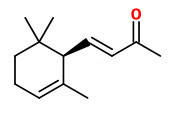 (R)-(+)-(E)-α-ionone | 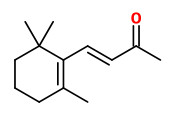 β-ionone | 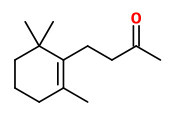 dihydro-β-ionone |  (E,Z)-nona-2,6-dienal |
„Even in his review on violet odorants in 1951 Schinz still believed that ionones did not occur in nature. A few years before, he and Ruzicka had isolated parmone from violet flower oil, which they believed to be the odorous principle of violets. It was not until 1972 that Uhde and Ohloff were able to show that parmone was a phantome, a mixture of (R)-(+)-α-ionone, (R)-(+)-dihydro-α-ionone, β-ionone and dihydro-β-ionone. Although Tiemann and Kruger had inaccurately analyzed orris root oil in the search of the odorous principle of violets, they had actually discovered what they were initially looking for. In the violet flower oil, Uhde and Ohloff found 8.22% of (R)-(+)-α-ionone and 0.22% of β-ionone. A recent headspace analysis of violets in bloom even gave 35.7% of α-ionones, 21.1% of β-ionone, and 18.2% of dihydro-β-ionone, which makes together 75% of the headspace.“
[Fragrance chemistry - milestones and perspectives., Gautschi, M., Bajgrowicz, J.A., Kraft, P., CHIMIA International Journal for Chemistry, Vol.55(5), 2001, 379-387]
„Viola odorata flowers give 0.003% essential oil. According to older information, the oil contains benzyl alcohol, 1-hexanol, 2,6-nonadienal (violet leaf aldehyde), 2,6-nonadienol. Fragrance principle is parmon = (E)-α-ionone, as (R)-(+)-enantiomer (99.9%).“
[Hagers Handbuch der Pharmazeutischen Praxis, Springer 2010]
β-Ionone, dihydro-β-ionone (th 1.7 ng/l air), (+)-(R)-α-ionone (th 3.2 ng/l air), (+)-(R)-dihydro-α-ionone (th 31 ng/l air), and dehydro-ɣ-ionone are main components of violet flower oil. „Apart from (2E,6Z)-nonan-2,6-dienal (1.9%), the flower oil does not contain any metabolites of fatty acids in sizable quantities. The sesquiterpene hydrocarbons (-)-zingiberene and and (+)-α-curcumene are major constituents (35%) of the flower oil as well.“
[Scent and Chemistry, Günther Ohloff, Wilhelm Pickenhagen, Philip Kraft, Wiley-VCH, 2012, 276]
„Genome-wide and in vitro assays demonstrate rs6591536 as the causal variant for β-ionone odor sensitivity. rs6591536 encodes a N183D substitution in the second extracellular loop of OR5A1 and explains >96% of the observed phenotypic variation, resembling a monogenic Mendelian trait. Individuals carrying genotypes for β-ionone sensitivity can more easily differentiate between food and beverage stimuli with and without added β-ionone. Sensitive individuals typically describe β-ionone in foods and beverages as “fragrant” and “floral,” whereas less-sensitive individuals describe these stimuli differently. rs6591536 genotype also influences emotional associations and explains differences in food and product choices.“
[A Mendelian trait for olfactory sensitivity affects odor experience and food selection., Jaeger, S.R., McRae, J.F., Bava, C.M., Beresford, M.K., Hunter, D., Jia, Y., Newcomb, R.D., Current Biology, Vol.23(16), 2013, 1601-1605]
http://www.sciencedirect.com/science/article/pii/S0960982213008531
„Absolutes isolated from Viola odorata leaves, valuable materials for the flavor and fragrance industry, were studied. Violets are mainly cultivated in France and Egypt and extracted locally. The absolutes of the two origins showed different olfactory profiles both in top and heart notes, as evidenced by sensory analysis… According to the HS-SPME GC/MS analyses, ethyl hexanoate and (2E,6Z)-nona-2,6-dienol were specific volatile compounds of the sample with French origin, while (E,E)-hepta-2,4-dienal, hexanoic acid, limonene, tridecane, and eugenol were specific of the samples with Egyptian origin. Additional compounds that were not detected by HS-SPME GC/MS analysis were revealed by GC-O analyses, some of them being markers of origin. Pent-1-en-3-ol, 3-methylbut-2-enal, 2-methoxy-3-(1-methylethyl)pyrazine, 4-ethylbenzaldehyde, β-phenethyl formate, and 2-methoxy-3-(2-methylpropyl)pyrazine revealed to be odorant markers of the French sample, whereas cis-rose oxide, trans-rose oxide, and 3,5,5-trimethylcyclohex-2-enone were odorant markers of the Egyptian samples.“
[Volatile Compounds of Viola odorata Absolutes: Identification of Odorant Active Markers to Distinguish Plants Originating from France and Egypt., Saint‐Lary, L., Roy, C., Paris, J.P., Tournayre, P., Berdagué, J.L., Thomas, O.P., Fernandez, X., Chemistry & biodiversity, Vol.11(6), 2014, 843-860]
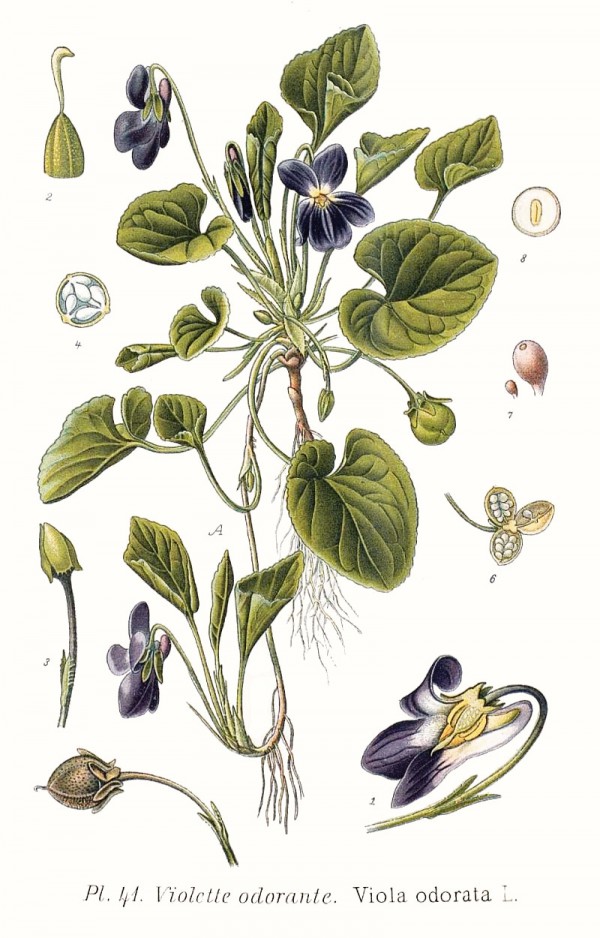
Masclef, A., Atlas des plantes de France, vol.2, t.41 (1890)
http://plantgenera.org/species.php?id_species=1065193
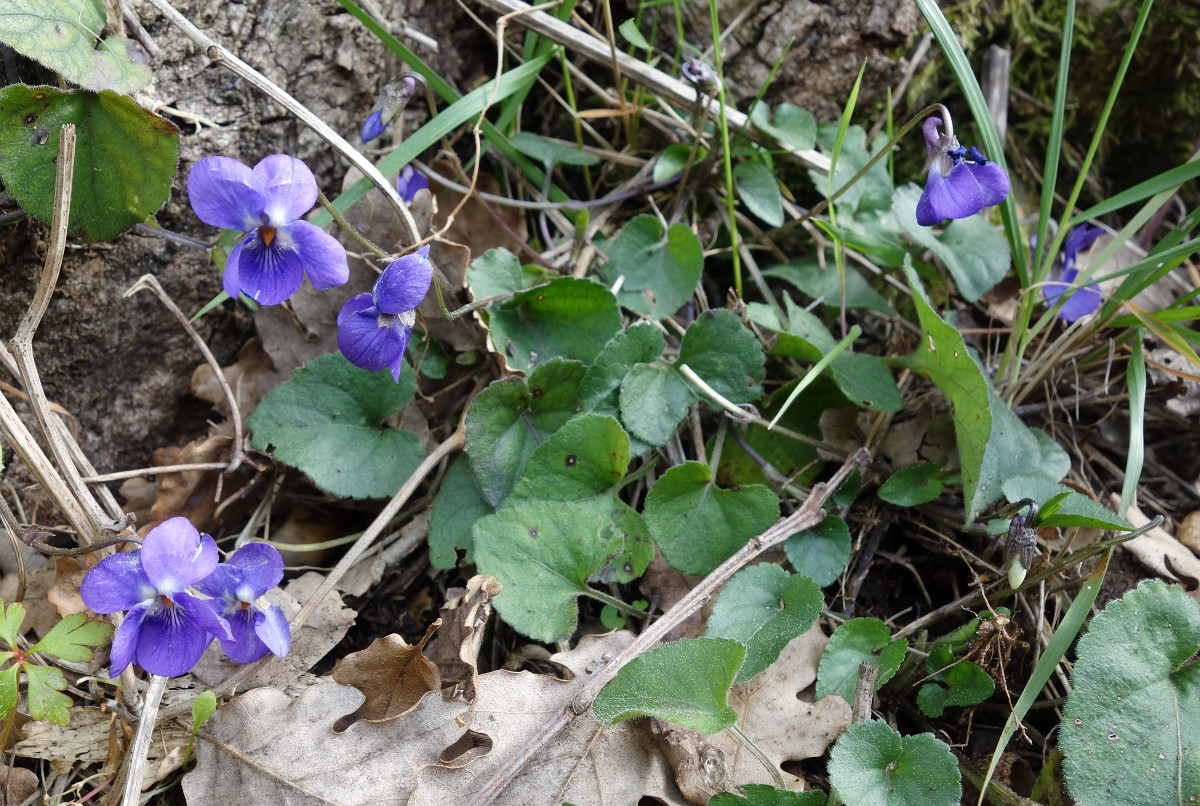
Viola odorata, Author: Andreas Kraska CC BY-SA 3.0
